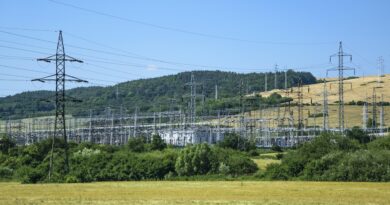Safety Mastery: Unleashing the Power of Electrical Safety Audits in Ghaziabad
In Ghaziabad, a bustling city with a growing industrial sector, ensuring the safety of electrical systems is of utmost importance. Electrical safety audits play a vital role in identifying potential hazards, preventing accidents, and maintaining compliance with safety standards. This article explores the significance of electrical safety audits, their process, and how they contribute to enhancing workplace safety in Ghaziabad.
1. Introduction
Electrical safety audits are comprehensive inspections of electrical systems, equipment, and practices within an organization. They aim to identify potential hazards, assess compliance with safety regulations, and provide recommendations for improving safety measures. In Ghaziabad, where industries and commercial establishments heavily rely on electrical systems, conducting regular safety audits is crucial.
2. Importance of Electrical Safety Audits
Electrical safety audits are essential for several reasons. Firstly, they help identify electrical hazards, such as faulty wiring, overloaded circuits, or inadequate grounding, which can lead to electrical accidents and fires. By addressing these hazards, organizations can significantly reduce the risk of injuries, property damage, and business interruptions.
Secondly, electrical safety audits ensure compliance with safety standards and regulations. In Ghaziabad, electrical installations must adhere to the guidelines set by the local electrical authorities. Regular audits help organizations stay updated with these regulations and avoid penalties or legal issues associated with non-compliance.
Lastly, electrical safety audits contribute to creating a culture of safety within organizations. By prioritizing safety and conducting audits, businesses demonstrate their commitment to employee well-being and create a safer work environment.
3. Understanding Electrical Safety Audits
3.1 Definition and Purpose
Electrical safety audits involve a systematic examination of electrical systems, equipment, and practices. The purpose is to identify potential hazards, assess the effectiveness of safety measures, and recommend improvements to mitigate risks.
3.2 Benefits of Conducting Electrical Safety Audits
Electrical safety audits offer several benefits. They provide a clear understanding of the existing electrical infrastructure, highlight potential hazards, and help organizations take proactive measures to ensure safety. Additionally, audits help in prioritizing maintenance and repair activities, reducing downtime, and optimizing electrical system performance.
4. Conducting an Effective Electrical Safety Audit
To conduct an effective electrical safety audit, organizations need to follow a structured process. Here are the key steps involved:
4.1 Preparing for the Audit
Before the audit, it is crucial to establish the scope, objectives, and timeline. Gathering relevant documentation, such as electrical drawings, maintenance records, and incident reports, is also essential. The audit team should be selected, and any necessary training or resources should be provided.
4.2 On-Site Inspection and Assessment
During the on-site inspection, auditors examine electrical equipment, wiring, grounding systems, and safety practices. They identify potential hazards, assess compliance, and document observations. Testing and measurements may also be conducted to evaluate the performance of electrical systems.
4.3 Documentation and Analysis
The findings from the on-site inspection are thoroughly documented and analyzed. This includes compiling data, reviewing records, and comparing observations against safety standards and best practices. The analysis helps in identifying areas of improvement and formulating recommendations.
4.4 Corrective Actions and Recommendations
Based on the analysis, auditors provide recommendations for addressing identified hazards and improving electrical safety. These recommendations may include repairs, upgrades, training programs, and procedural changes. Clear and actionable steps should be outlined, and their implementation should be monitored.
5. Compliance with Electrical Safety Standards
5.1 Regulatory Requirements
In Ghaziabad, electrical safety audits must comply with the guidelines set by the local electrical authorities. Organizations should familiarize themselves with the relevant regulations and ensure their audit process aligns with these requirements.
5.2 Implementing Best Practices
Apart from regulatory compliance, organizations should strive to implement best practices in electrical safety. This includes adhering to international standards, adopting advanced safety technologies, and staying updated with industry trends. By going beyond the minimum requirements, organizations can enhance their overall safety performance.
6. Enhancing Workplace Safety Through Electrical Safety Audits
Electrical safety audits contribute significantly to enhancing workplace safety in Ghaziabad. They help organizations in the following ways:
6.1 Identifying Hazards and Risks
By conducting audits, organizations can identify potential electrical hazards, such as faulty equipment, improper wiring, or inadequate safety protocols. Early identification of these risks allows for timely interventions to prevent accidents and injuries.
6.2 Preventing Electrical Accidents and Injuries
Addressing identified hazards and implementing recommended safety measures significantly reduces the likelihood of electrical accidents and injuries. This creates a safer work environment and protects employees from harm.
6.3 Promoting a Safety Culture
Regular electrical safety audits send a clear message to employees that their safety is a top priority. It helps foster a safety-conscious culture where individuals actively participate in maintaining a safe workplace and report potential hazards.
7. Electrical Safety Audit Checklist
An effective electrical safety audit checklist should cover various aspects of electrical systems and practices. Here are some key items that should be included:
7.1 Electrical Equipment Inspection
- Condition and integrity of electrical equipment
- Proper labeling and identification
- Presence of protective covers and guards
- Adequate ventilation and cooling measures
7.2 Wiring and Grounding Systems
- Proper wiring connections and insulation
- Grounding and bonding effectiveness
- Adequate protection against electrical faults
- Clearances and spacing compliance
-
. Electrical Safety Audit Checklist (Continued)
7.3 Electrical Panel and Distribution
- Panel accessibility and labeling
- Proper circuit breaker sizing and coordination
- Overcurrent protection devices functioning correctly
- Compliance with load capacity and distribution requirements
7.4 Personal Protective Equipment (PPE)
- Availability and condition of PPE for electrical work
- Adequate training on PPE usage and maintenance
- Compliance with PPE standards and regulations
- Regular inspection and replacement of PPE items
7.5 Emergency Response Preparedness
- Existence and functionality of emergency shutdown procedures
- Presence of fire extinguishers and their accessibility
- Emergency lighting and exit sign functionality
- Regular drills and training for emergency situations
8. Benefits of Hiring Professional Electrical Safety Auditors
When it comes to conducting electrical safety audits, organizations can benefit greatly from hiring professional auditors. Here are some advantages:
8.1 Expertise and Experience
Professional auditors possess specialized knowledge and expertise in electrical safety. They are familiar with industry standards, regulations, and best practices. Their experience allows them to identify potential hazards accurately and provide effective recommendations.
8.2 Comprehensive Analysis
Professional auditors conduct thorough and detailed inspections of electrical systems. They have the tools and resources to perform in-depth measurements, testing, and analysis. This comprehensive approach ensures that all aspects of electrical safety are evaluated.
8.3 Recommendations and Remediation
Professional auditors not only identify hazards but also provide practical recommendations for addressing them. They offer guidance on implementing safety measures, prioritizing actions, and achieving compliance. Their expertise contributes to effective remediation of electrical safety issues.
9. Electrical Safety Audit Process in Ghaziabad
To ensure a successful electrical safety audit in Ghaziabad, organizations should follow these steps:
9.1 Finding the Right Auditor
Research and identify reputable electrical safety auditors who have experience in conducting audits within Ghaziabad. Look for auditors with a strong track record, industry certifications, and positive client reviews. Verify their expertise in local regulations and compliance requirements.
9.2 Scheduling and Conducting the Audit
Contact the selected auditor and schedule the audit based on mutual availability. Provide them with relevant information about the organization’s electrical systems, documentation, and any specific areas of concern. During the audit, facilitate access to all necessary areas and provide support as requested.
9.3 Reviewing the Audit Report
Once the audit is completed, the auditor will provide a detailed report outlining their findings, analysis, and recommendations. Review the report thoroughly, seek clarifications if needed, and discuss the recommended actions with the auditor. Develop an action plan based on the report’s recommendations.
10. Conclusion
Electrical safety audits are vital for ensuring the safety and well-being of individuals in Ghaziabad’s industrial and commercial sectors. By conducting regular audits, organizations can identify and address electrical hazards, enhance compliance with safety regulations, and foster a culture of safety. Hiring professional auditors adds value to the process, providing expertise, comprehensive analysis, and actionable recommendations. Prioritizing electrical safety audits contributes to a safer work environment and protects lives and assets.
FAQs (Frequently Asked Questions)
1. How often should electrical safety audits be conducted?
The frequency of electrical safety audits depends on various factors, including the size of the organization, the complexity of electrical systems, and regulatory requirements. Generally, audits should be conducted annually or whenever there are significant changes to electrical installations or safety protocols.
2. Can internal staff conduct electrical safety audits?
While internal staff can perform basic safety checks, it is recommended to hire professional auditors for comprehensive electrical safety audits. Professionals have specialized knowledge, experience, and unbiased perspectives that ensure thorough evaluations and accurate recommendations.
3. How long does an electrical safety audit typically take?
The duration of an electrical safety audit varies depending on the size and complexity of the organization’s electrical systems. It can range from a few days to several weeks. The auditor will provide an estimated timeline based on the scope of work and resources available.
4. What are the potential consequences of neglecting electrical safety audits?
Neglecting electrical safety audits can result in serious consequences, including electrical accidents, injuries, property damage, and legal liabilities. Non-compliance with safety regulations can lead to penalties, business disruptions, and reputational damage. Regular audits are crucial for maintaining a safe and compliant work environment.
5. How can organizations benefit from electrical safety audits?
Electrical safety audits help organizations identify hazards, prevent accidents, ensure compliance with regulations, and improve overall safety performance. They reduce the risk of electrical-related incidents, protect employees and assets, and foster a culture of safety within the organization.




